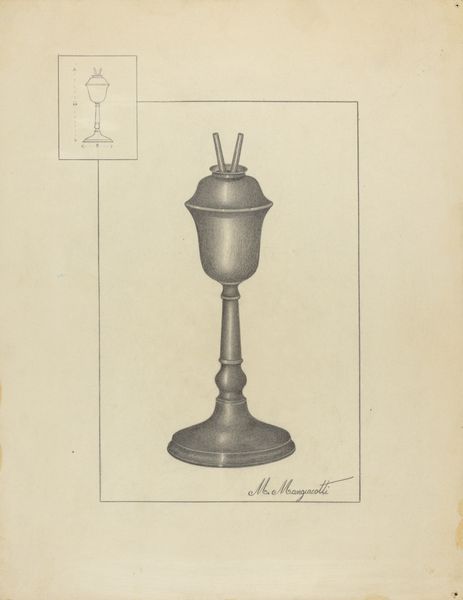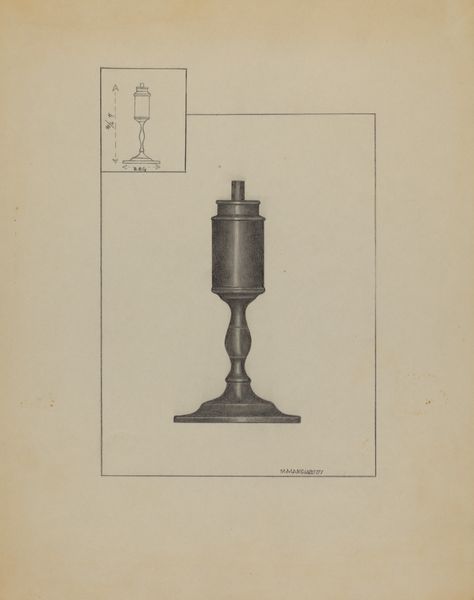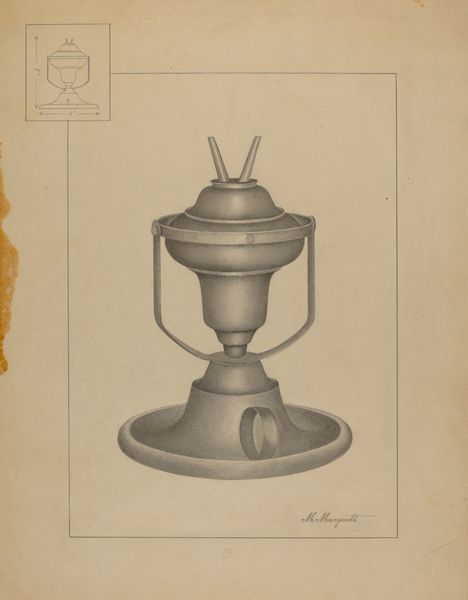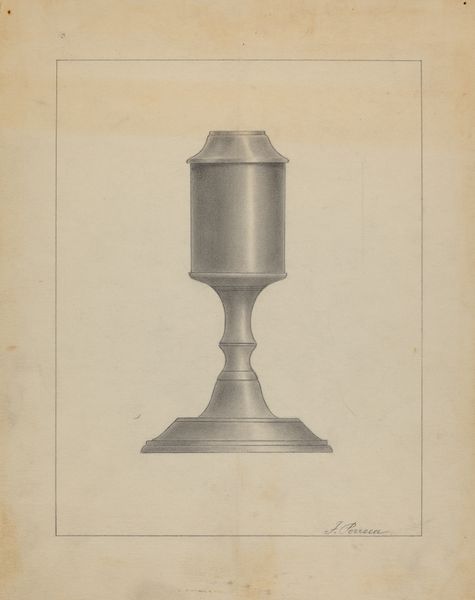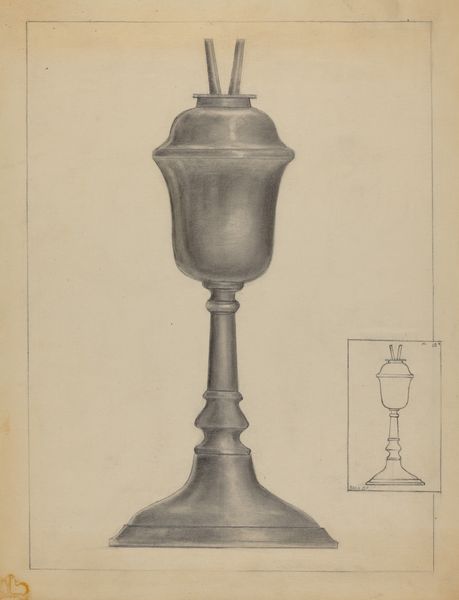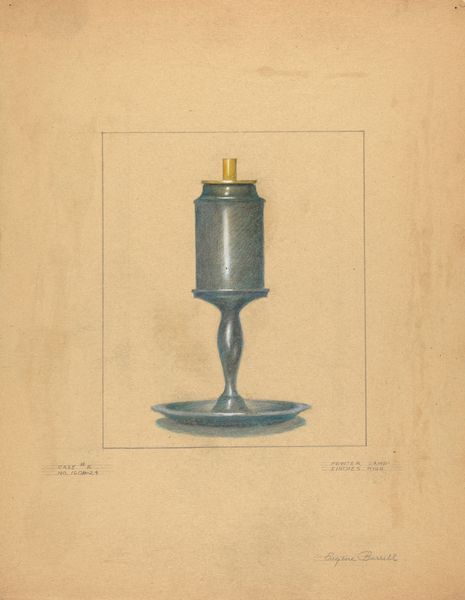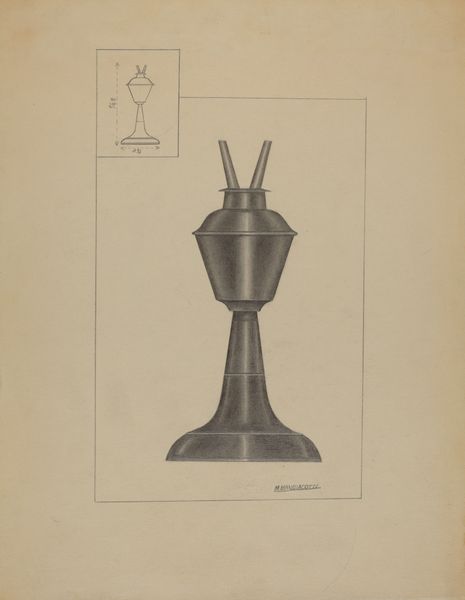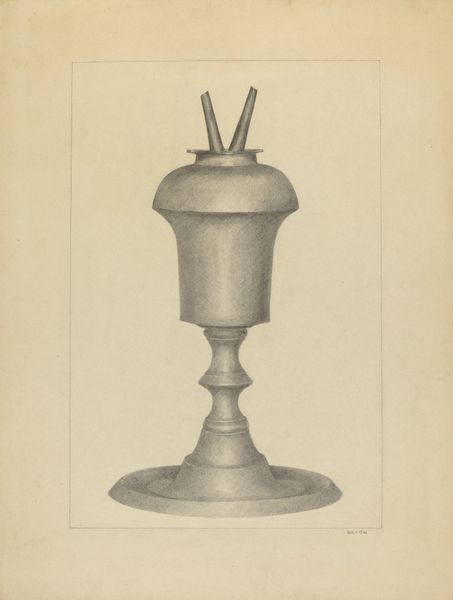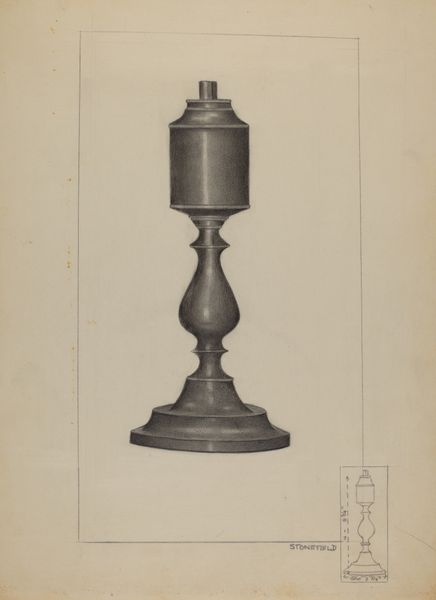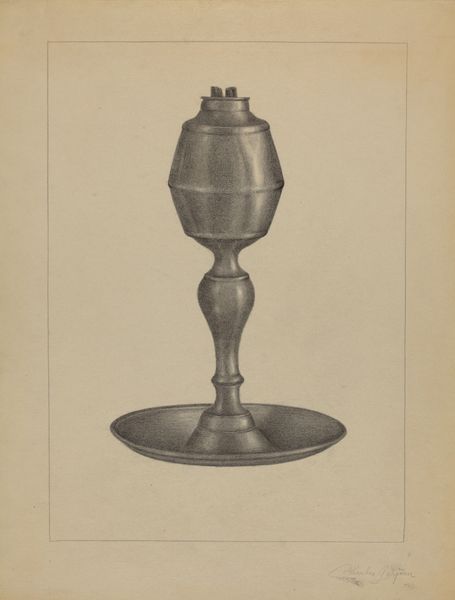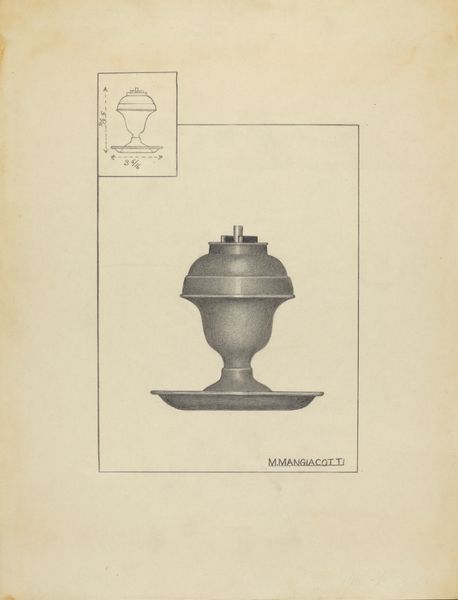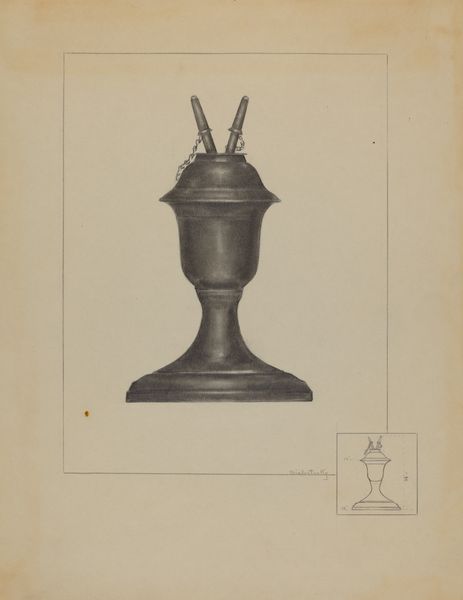
drawing, pencil, graphite
#
drawing
#
pencil
#
graphite
#
academic-art
#
realism
Dimensions: overall: 29.1 x 22.9 cm (11 7/16 x 9 in.) Original IAD Object: 9 1/2" high; 5" in diameter
Copyright: National Gallery of Art: CC0 1.0
Curator: Standing before us is “Lamp,” a drawing rendered in pencil and graphite by Matthew Mangiacotti, dating to around 1936. Editor: There’s something both comforting and slightly sterile about it. The delicate rendering gives it an aura of antiquity, yet the precision is almost…clinical. Curator: Indeed, Mangiacotti's skill is evident in the detail. The artist presents an elevated realism in this drawing. Note, the artist has given the dimensions to the upper left corner. This was likely a design or study, what social purposes could an oil lamp serve at this time, and who might have needed its services most. Editor: You're right, it lacks the spontaneity of a pure art piece. I keep wondering about its materiality - the actual metal and craftsmanship intended here, reflecting on mass production methods of that period alongside traditional crafting. What sort of labor and industry underpinned this sort of functional item? Was it a factory produced commodity? Curator: Perhaps not. These details of execution would imply there was attention given to its crafting as more of a high-end item of some sort, not exactly what we might assume when examining lamps, traditionally, and the classes of society that utilized them. There might be gender issues within. Women were most certainly marginalized at the time, where men might have worked at higher class places or be afforded their labor outside, woman in the kitchen by candlelight... perhaps they yearned to create items as pristine as this. Editor: A vital intersection, certainly. What did labor look like for both men and women working on items, maybe one gender might prepare one half of the lamp while the other performs more meticulous functions in terms of design.. It’s essential we unpack those material conditions. Curator: The study allows the lamp itself to emerge as something more than merely utilitarian object but the site of class difference. Editor: Exactly. And the careful handling, the light play… I think there is an entire hidden system around labor and power that would need to be examined. It gives the lamp meaning, far beyond simple function. Curator: Indeed. Mangiacotti’s "Lamp" offers an elegant glimpse, both into form and cultural possibilities and critique. Editor: For me, seeing it is to reveal something of production, craft, and how objects embody historical forces, the complex systems behind their making and purpose.
Comments
No comments
Be the first to comment and join the conversation on the ultimate creative platform.
